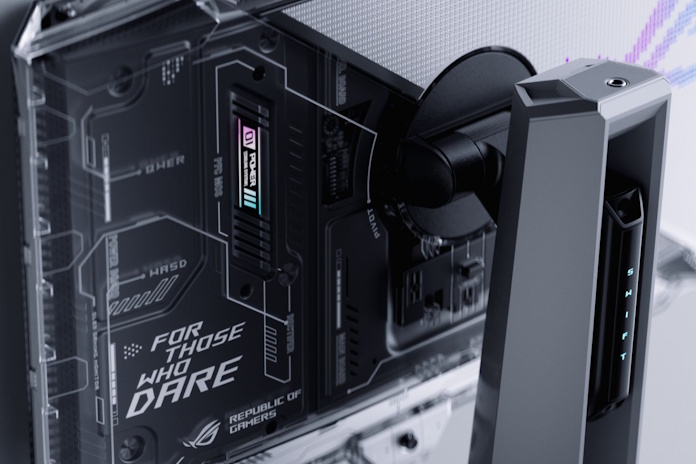Gaming monitors have been evolving so rapidly over the last decade that it’s almost startling to look back on the comparably plain specs of the models that used to sit on my desk. The display that took me on my original runs through The Elder Scrolls III: Morrowind, Star Wars: Knights of the Old Republic, and World of Warcraft was quaint by modern standards. I loved that monitor at the time, but its 60Hz refresh rate, poor coverage of the sRGB color gamut, and double-digit response times just don’t cut it for me anymore.
One spec that has been notably increasing in recent years is refresh rate. The ROG PG278Q blazed onto the scene in 2014 with its 144Hz refresh rate and support for G-SYNC, but that was just the start. Esports enthusiasts, in particular, loved the competitive edge provided by sky-high refresh rates and jumped to grab the 240Hz and 360Hz models that followed.
In 2025, refresh rates have taken another generational leap. Today, you don’t need more than $300 (USD) to get a display with a 310Hz refresh rate (OC). The dual-mode ROG Swift OLED PG32UCDP lets you toggle between 4K 240Hz and FHD 480Hz modes on a dime. And if you’re willing to be patient, we just announced the ROG Swift OLED PG27AQWP-W, which offers a jaw-dropping 720Hz mode.

Every time over the last ten years that the refresh rate of gaming monitors has taken a leap forward, a conversation has cropped up in online gaming communities. People wonder whether they’ll notice the impact of the bolstered refresh rate. Some argue that the human eye can’t even distinguish the difference. These are perfectly reasonable questions to ask: any time a bleeding-edge gaming technology emerges, it’s fair to have a conversation about its impact and whether it’s worth the investment.
I won’t pretend that I can answer these questions for everybody. Different gamers have different expectations. Our eyes aren’t the same, and neither are our gaming PCs. But I can answer these questions for me. As far as I’m concerned, there’s no such thing as a refresh rate that’s too high. I want all the hertz that I can afford. Let me explain why.
This article is part of our “Back to Basics” series designed to help PC building newcomers make informed decisions about component purchases and assemble their new PC with confidence. Click here to browse the entire collection of posts.
I trust my eyes
I don’t have the eagle eyes of an esports professional, but I do see the difference with a higher refresh rate right away. Even if I’m just moving my mouse cursor across the screen on a 60Hz display, I’ll notice the decreased smoothness. That translates into games, as well, especially first-person shooters.
And I’m not the only one. A few years back, NVIDIA did some testing to see how higher frame rates and higher refresh rates correlated with kill/death ratios in battle royale games like Fortnite. They found that gamers who upgraded from a GeForce GTX 1050 Ti to a GeForce RTX 20 series graphics card increased their K/D ratio by upwards of 17%. Frames win games. But they uncovered an even greater impact from increasing refresh rate. Bumping from a 60Hz display to a 144Hz display boosted their K/D ratio by a whopping 51%. Going from 144Hz to 240Hz offered a 34% increase.
Those numbers do suggest a curve of diminishing returns: at some point, boosting refresh rate probably won’t impact win rates in a measurable way. But it’s hard to look at this data — or the monitors used by today’s professional gamers, for that matter — and walk away thinking that refresh rates above 240Hz are merely academic. If 240Hz offers a double-digit boost, there’s room for more with even higher refresh rates.
An analogy with resolution
As with many other display specifications such as resolution, pixel transition speed, and color volume, I’m not content with “good enough” when it comes to refresh rate. I want it dialed up to extremes. I want to see monitors that surge past the capabilities of the human eye, and no, I don’t think we’ve seen such a monitor just yet.
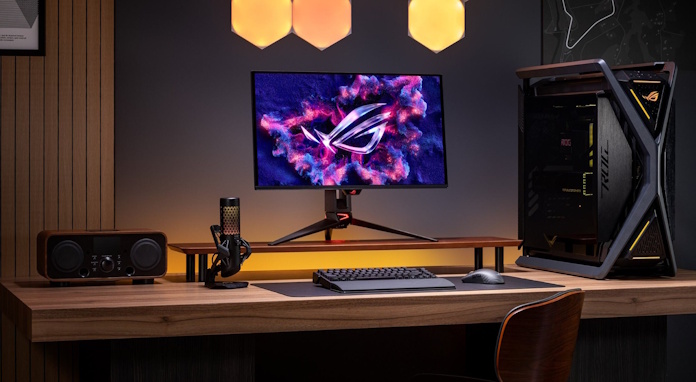
But we are seeing something in that territory when it comes to display resolution. Right now, panel manufacturers can pack an astounding number of pixels into displays. That’s one reason why the ROG Swift OLED PG27UCDM turned so many heads this year. Squeezing a 4K resolution into a 27-inch panel, this 240Hz OLED gaming monitor gives you an incredible 166 PPI. When you sit at a typical distance from this monitor, most folks can’t distinguish individual pixels.
For smartphones, people love displays that offer resolutions so high that the whole idea of a “pixel” takes a back seat. The ROG Phone 9, for example, is equipped with a 6.78-inch 2400×1080 display, which works out to a luxurious 388 PPI. Micro OLED display technology, as you’ll find in smart glasses like the ASUS AirVision M1, can reach PPI levels that have to be measured in the thousands.
My point is this: as with resolution, I’m excited to see gaming monitors that push the boundaries of what my eyes can perceive when it comes to refresh rate. In the same way that I love screens that offer a resolution so high that I can’t see individual pixels, I’d love a monitor with a refresh rate so fast that it removes all possibility of stuttery motion.
For both frame rates and refresh rates, more is better
Another side of the story relates to PC performance. Simply put, the process of optimizing a new game for my PC is much easier when my monitor has a massive refresh rate range.
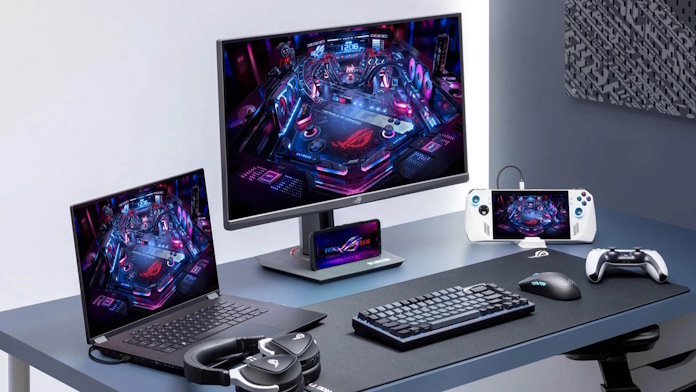
Balancing image quality and average frame rate is one piece of the optimization puzzle. Another is avoiding the visual anomalies that crop up when frame rates exceed a monitor’s refresh rate. While that’s not usually a concern for games like Alan Wake II, a visual feast which can put some hurt on any graphics card out there, there are plenty of games in my library capable of hitting extremely high maximum FPS numbers. In part, that’s because technologies like DLSS and FSR are changing the old paradigms about what kinds of frame rates are possible. Even when you’re gaming on a 4K monitor, a 240Hz refresh rate can show its worth when upscaling tech is thrown into the mix.
But we also live in a world of tightly optimized esports games ready to run at dizzying frame rates. With Counter-Strike 2, a mainstream graphics card is all you need to get 400+ FPS. With a high-refresh-rate monitor at your disposal, all those frames translate into an unerring view of the action.
For many games, I can find graphics settings that keep frame rates within the G-Sync range of my gaming monitor, neither dropping too low nor blowing off the roof. For everything else, I use the combination of G-Sync, a frame rate limiter, and VSync. But I’d rather live in a world where those steps aren’t even necessary. I’d rather have a G-Sync range so jaw-droppingly massive that my current frame rates would never even have a chance to hit the refresh rate ceiling.
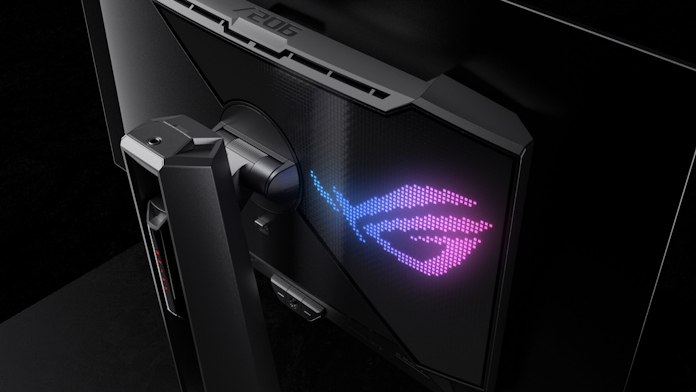
For me, that’s one of the key advantages for increasingly high refresh rates on gaming monitors. If you’re just looking at average FPS, a super-high refresh rate might seem like a luxury. But when you look at max FPS, you’ll see that there are often moments when your current frame rate might exceed your monitor’s refresh rate. Opting for a monitor with a high refresh rate helps you avoid the visual anomalies that can arise in that scenario.
A high refresh rate matters even when your frame rates aren’t stratospheric
High-refresh-rate monitors prove their worth in those moments when your FPS is in the rafters, but that’s not all. Even when your current FPS is more modest, a high-refresh-rate monitor brings demonstrable value to the table.
That’s because games feel most responsive when there’s as little delay as possible between a frame being rendered and that frame appearing on your screen. Depending on how the timing of a frame being ready lines up with the next available refresh cycle, you’ll have moments when a frame has to sit in the queue. A faster refresh rate means you’ll experience less delay in these moments for a smoother overall experience.
High refresh rates are especially noticeable on an OLED gaming monitor
So far, we’ve talked about display technology fairly generally. But it’s worth noting that the unique characteristics of OLED panels make the advantages of a high refresh rate especially noticeable.
That’s because high refresh rates need a comparably speedy response time. Pixels take a certain amount of time to transition from one color to the next, and that creates some amount of blur on your screen (and also sample-and-hold, but that’s a discussion for another day). Ideally, you want a response time that’s low enough that each pixel hits its target before the next refresh hits. Otherwise, you won’t see the full advantage of the higher refresh rate. (Side note: If you’ve been underwhelmed by a high-refresh-rate monitor in the past, perhaps this is the reason why. Not every gaming monitor out there does any equally good job of balancing these specs. A detailed review site like rtings.com is your friend.)
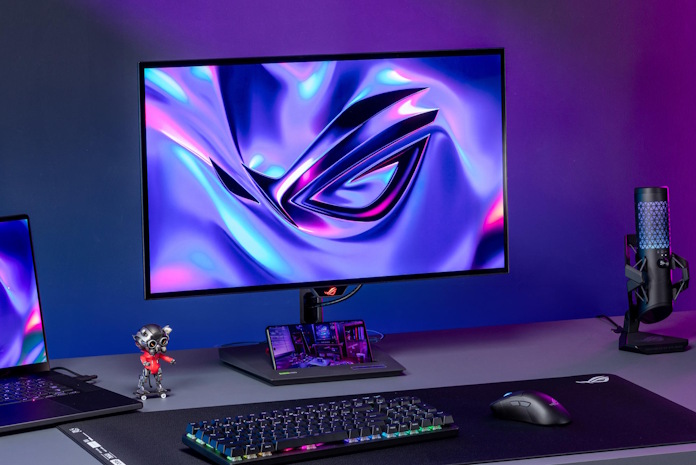
OLED panels are great targets for a generational leap forward in refresh rate because they can offer astounding response times. With an LCD panel, we measure response times in milliseconds. With an OLED panel, we have to bust out a decimal point, because response times get as low as 0.02ms. Response times that low create headroom for beefing up refresh rates to all-new levels.
If you haven’t yet seen what a sky-high refresh rate looks like on an OLED panel, I’d suggest that you defer judgment until you see it in person. The response times of this cutting-edge panel tech makes the value of a high refresh rate even more noticeable than with an LCD panel.
If you can, do a side-by-side comparison
I just can’t agree with the folks who argue that we’ve already reached the point with gaming monitor technology where refresh rate exceeds the capabilities of the human eye. Why am I so confident? I have extensive experience watching people’s reactions in countless side-by-side comparisons between different monitors with different refresh rates. And that makes me willing to stick to my guns here.
I’ve gotten that experience from the time I’ve spent helping visitors to ROG showrooms at events like the yearly Consumer Electronics Show (CES). If you’re familiar with this expo, you know that it’s the place where almost every tech company on the planet makes its biggest product announcements. For many visitors, it’s an unbeatable opportunity to see a wide range of products all at once and get a first-hand perspective on which technologies make the biggest impact.

When I’m working in the ROG showroom at CES on any given year, I get to watch as people check out the latest gaming monitors. I remember back in 2024 when we first demoed the ROG Swift OLED PG27AQDP, a 27-inch gaming monitor with a 480Hz refresh rate and a QHD resolution. Everyone I saw who tried it — and I am using that word “everyone” very literally — noticed the difference in fluidity that its refresh rate offered over the 240Hz options in the room. Maybe I missed an unimpressed influencer or two who glanced at it and wandered on to the next exhibit. Maybe.
But don’t take my word for it. Find an opportunity to conduct a side-by-side comparison for yourself. Make a visit to an ROG booth at an event like Gamescom or CES, if you can. Visit your local hardware store, like a Micro Center or Best Buy, to check out any demos that they have set up for you.
If that isn’t possible, go to www.testufo.com using your current gaming monitor to the see the difference that its top-end refresh rate makes over lower options — and ask yourself whether the moving image up top could be even clearer and smoother than it is right now. If there’s room for improvement, you’ll 100% be able to notice the difference that a higher-refresh-rate monitor can provide.
In 2025, there’s a high-refresh-rate monitor for every budget
If you’ll humor me with one more analogy, today’s PC gamers face a similar situation with system memory as they do with monitor refresh rates. DDR5 changed the game so much when it comes to capacity that it’s hard to recommend that gamers build a system with less than 32GB of RAM. Even though that’s honestly overkill for what most games require, the price difference between 2x8GB and 2x16GB DDR5-6000 kits just isn’t large enough to recommend smaller kits to most builders.
The same is true with high-refresh-rate monitors. Even if you legitimately can’t tell the difference between 60Hz and 144Hz, higher-refresh-rate options are just so readily available that you might as well get more. Take a look at the current TUF Gaming monitor lineup, for example. Ignoring sales and discounts, the cheapest 27-inch option is 144Hz. If you’re shopping for a gaming monitor in 2025, there’s little point in settling for less.

And you don’t need to invest that much more to get an even higher refresh rate. The 280Hz TUF Gaming VG279QM1A has a mainstream price tag at $229.00 (USD), and the next time that it drops below $200 (USD) for a sales event won’t be the first. The 27-inch ROG Strix XG279CNS ups the ante all the way to 380Hz, and it can be yours for $349.00 (USD). Judging by hertz-per-dollar (if you’re willing to let us make up a metric), both options are a bargain.
Turning our attention to the top-shelf monitors in our lineup, there is a higher price tag associated with securing a display with a bleeding-edge refresh rate for your setup. But even if those models don’t fit your needs or budget, they’re still a welcome sign for the future. Not that long ago, a 144Hz gaming monitor was a premium pick. Now, it’s the baseline. Seeing 720Hz options hit the market makes it easy to imagine a future when the refresh rates of mainstream monitors take another generational leap forward.
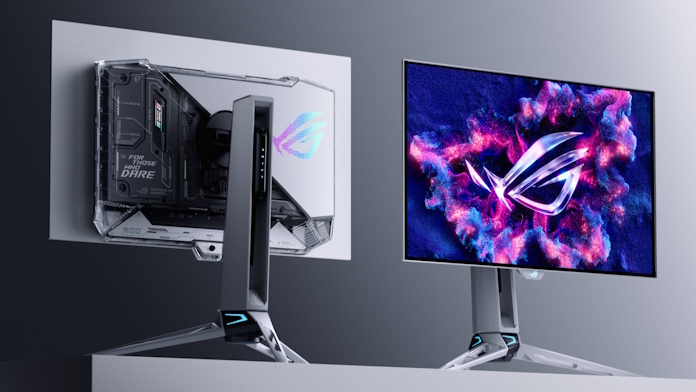
Judging by recent history, that day is probably coming sooner than you might think. In the meantime, we have boundary-pushing monitors on the way — and very affordable alternatives equipped with refresh rates that you might find surprisingly high if it’s been a little bit while since you last shopped for a monitor. In today’s gaming monitor market, there’s something for everyone.
As for me? I’m just over here dreaming about the day when we’ll hit four-digit refresh rates. When 1000+Hz gaming monitors become a reality, I’ll be the first in line.

